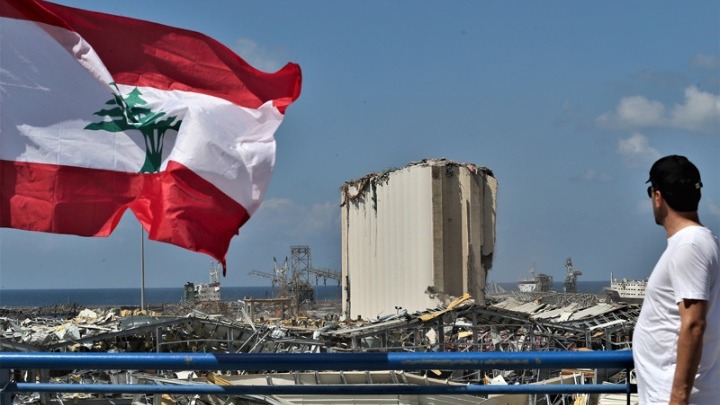The explosion in the port does not only overshadow the future of Beirut. It hit museums and historic buildings of traditional architecture, destroying what was left of the glorious past of the Lebanese capital.
Known for their triple-arched windows, a typical architectural trait of Beirut, hundreds of architectural jewels dating back to the time of the Ottoman Empire or the French Mandate (1920-1943) had already suffered the ravages of time.
After being tested during the Lebanese Civil War (1975-1990), the ‘coup de grâce’ was delivered last Tuesday by an explosion equivalent to 3.3 on the Richter scale and a catastrophic blast wave swept through the center of the Lebanese capital.
Some of the older buildings are located near the port, where tons of ammonium nitrate stored there for a decade exploded.
The explosion destroyed antiquities older than Lebanon itself, which is celebrating its 100th anniversary since Greater Lebanon this year. The antiquities are located at the mansion formerly known as the “Palais de la Résidence” dating to the 18th century
In the mansion, which is decorated with marble columns, doors were uprooted, wooden paneling with calligraphic inscriptions dating back to the Ottoman Empire were destroyed, and 200-year-old stained glass windows were shattered.
“It’s like rape,” says Tania Ingea, the mansion’s heiress.
The palace was built by one of Beirut’s seven richest families, the Greek-Orthodox Sursock family, originally from Constantinople and surviving the 2006 civil war and catastrophic war between Hezbollah and Israel.
With the explosion, there is now a rift between the present and the past. “It is a rift in the transmission of the memory of a place, a family, a part of the history of the city,” says its current owner.
Gaping holes
Nearby, the Sursock Museum, the heart of Beirut’s cultural life that houses an impressive collection of contemporary art, has not been left untouched. Just a few months ago, it hosted an unpublished Picasso exhibition.
Now, bags of debris are strewn in the courtyard, at the base of the monumental staircase where the newlyweds came to be photographed, against the backdrop of the whitewashed façade with the colorful stained glass windows.
These famous stained glass windows have been destroyed and the windows are nothing more than gaping holes.
The palace was built in 1912 and is an example of Venetian and Ottoman architecture. Fifty years later, it became a museum at the request of its owner, Nicholas Sursock, a well-known art collector.
A museum spokesperson said 20 to 30 works had been damaged, mostly by fragments of glasses thrown at the blast.
Among them, one of the most valuable works of the collection: the portrait of Nicholas Sursock painted by the French-Dutch Kees Van Dongen.
The museum reopened in 2015 after eight years of renovation. The architect who supervised the work assures that the building itself has not been damaged. The restoration work will take more than a year and will cost “millions of dollars”.
Before winter comes
In the midst of the catastrophe, there is a miracle: the national museum, which houses a huge collection of statues and Greek, Roman and Phoenician antiquities, survived the blast. According to Culture Minister Abbas Mortada, only the façade has been damaged.
The National Museum was located on the dividing line during the Civil War. The neo-Hellenistic style building was found trapped between enemy fire.
The museum’s most valuable exhibits were saved from looting thanks to the care of conservator Maurice Chéhab, who hid them in concrete.
Today, hundreds of buildings belonging to the Lebanese national heritage have been damaged, the Minister of Culture assures. “It will take a lot of work.”
A team is already assessing the damage, but the restoration will cost “hundreds of millions” of dollars, the minister said, hoping for help from abroad, especially from Paris.
“We must proceed with the restoration work as soon as possible. If winter comes and they are not completed, the risk will be great.”
Source: ANA-MPA
